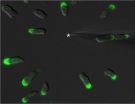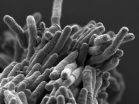(Press-News.org) Chicago (July 7, 2015)- Switzerland has a long history of trying to be as self-sufficient and energy independent as possible. Although its energy supply system has served it well in the past, the country is now looking to turn away from its reliance on nuclear power and seeks to compensate for the energy lost from hydropower as a result of climate change. In the latest issue of the Bulletin of the Atomic Scientists, published by SAGE, Dominic Notter of Empa discusses how the country aims to address this transition, finding a new supply mix that combines energy conservation, greater efficiencies, alternative energy sources, the "smart grid", and the introduction of new technologies, so that Switzerland can secure its energy independence for the future.
In the article, Notter outlines:
"Switzerland has a long tradition of using nuclear energy. With no reserves of coal, oil, or natural gas of its own, the country has to turn to other sources to meet its energy needs [...] All told, nine percent of Switzerland's total energy is met by nuclear power- a figure triple that of the United States (World Nuclear Association, 2015a) [...] But after Fukushima, the Swiss government decided to close down all its nuclear power plants, without a clear vision of what will take their place- a pressing concern in a time of ever- increasing demand."
Notter discusses how the government is examining how best to replace the energy generated from nuclear power. Switzerland could buy its energy from neighboring countries but prefers to be as self-sufficient and energy-independent as possible after being surrounded by hostile powers in World War II and relying on them for supplies in a time of great scarcity. He states:
"The goal is to gradually phase out of nuclear power and into renewables by 2034, and to be largely independent of fossil fuels. Reaching it is based upon the idea of combining highly efficient energy production processes with substantial reductions in energy consumption."
Notter concludes:
"Over the next four decades Switzerland faces a restructuring of its entire energy supply system. The new supply mix will be free from nuclear power, rather low in carbon intensity, and resting upon much higher efficiencies based on the newest and the most energy- efficient technologies- along with the developments of smart grids, decentralized power suppliers, hydropower, wind power, photovoltaics, biomass, wood, and the rigorous use of burning waste to generate energy whenever materials cannot be recycled [...] A single "magic bullet" suitable for every purpose is not available. Switzerland most likely has to find its own energy supply mix, with the biggest sustainability potential."
INFORMATION:
The article "Small country, big challenge: Switzerland's upcoming transition to sustainable energy", Dominic Notter, published in Bulletin of the Atomic Scientists, will be free to access for a limited time and can be read here.
The full table of contents can be accessed here.
The Bulletin of the Atomic Scientists engages science leaders, policy makers, and the interested public on topics of nuclear weapons and disarmament, the changing energy landscape, climate change, and emerging technologies. We do this through our award winning journal, iconic Doomsday Clock, public access website, and regular set of convenings. With smart, vigorous prose, multimedia presentations, and information graphics, the Bulletin puts issues and events into context and provides fact-based debates and assessments. For 70 years, the Bulletin has bridged the technology divide between scientific research, foreign policy, and public engagement.
Bulletin Media Contact: Janice Sinclaire, jsinclaire@thebulletin.org
http://bos.sagepub.com
SAGE Founded 50 years ago by Sara Miller McCune to support the dissemination of usable knowledge and educate a global community, SAGE publishes more than 800 journals and over 800 new books each year, spanning a wide range of subject areas. A growing selection of library products includes archives, data, case studies, conference highlights and video. SAGE remains majority owned by our founder and after her lifetime will become owned by a charitable trust that secures the company's continued independence. Principal offices are located in Los Angeles, London, New Delhi, Singapore and Washington DC. http://www.sagepub.com
Scientists at the University of California, Davis, have identified a key mechanism in neuropathic pain. The discovery could eventually benefit millions of patients with chronic pain from trauma, diabetes, shingles, multiple sclerosis or other conditions that cause nerve damage.
A biological process called endoplasmic reticulum stress, or ER stress, is the significant driver of neuropathic pain, said lead researchers Bora Inceoglu of the UC Davis Department of Entomology and Nematology and UC Davis Comprehensive Cancer Center, and Ahmed Bettaieb, Department of Nutrition. ...
LOS ANGELES (July 6, 2015) - Cedars-Sinai researchers have successfully tested two new methods for preserving cognition in laboratory mice that exhibit features of Alzheimer's disease by using white blood cells from bone marrow and a drug for multiple sclerosis to control immune response in the brain.
Under the two approaches, immune cells from outside the brain were found to travel in greater numbers through the blood into the brain. The study showed measurable benefits in mice, an encouraging step toward further testing of these potentially powerful strategies in human ...
New research suggests guidelines on children's exposure to radio frequency waves from technology are confusing for parents.
The review into the polices of 34 countries, carried out by Dr Mary Redmayne, from the Department of Epidemiology and Preventive Medicine at Monash University, found varying degrees of advice about children's exposure to radio frequency electromagnetic fields (RF-EMF).
RF-EMFs are emitted from technology including WiFi, tablets and mobile phones. Associated with an increased risk of some brain tumours in heavy and long-term phone users, RF-EMFs ...
ARLINGTON HEIGHTS, Ill. (July 7, 2015) - Parents of kids with severe allergies know how scary a severe allergic reaction (anaphylaxis) is. New research offers clues as to why some kids can have a second, related reaction hours later - and what to do about it.
A study in the Annals of Allergy, Asthma and Immunology, the scientific publication of the American College of Allergy, Asthma and Immunology (ACAAI), examined records of 484 children seen in an emergency department (ED) for anaphylaxis. The researchers tracked whether there was a second, follow-up reaction. Delayed ...
When Greek mythology and cell biology meet, you get the protein Callipygian, recently discovered and named by researchers at The Johns Hopkins University for its role in determining which area of a cell becomes the back as it begins to move.
The findings, made in the amoeba Dictyostelium discoideum, shed light on how symmetrical, round cells become "polarized," or asymmetrical and directional. A summary of the findings was published online June 30 in the Proceedings of the National Academy of Sciences.
"Cells have to have a front and a back to migrate," says Peter ...
Scientists have discovered new ways in which the malaria parasite survives in the blood stream of its victims, a discovery that could pave the way to new treatments for the disease.
The researchers at the Medical Research Council's (MRC) Toxicology Unit based at the University of Leicester and the London School of Hygiene & Tropical Medicine identified a key protein, called a protein kinase, that if targeted stops the disease. The study is published today (Tuesday) in Nature Communications.
Malaria is caused by a parasite that lives inside an infected mosquito and ...
Testing thousands of approved drugs, EPFL scientists have identified an unlikely anti-tuberculosis drug: the over-the-counter antacid lansoprazole (Prevacid®).
Tuberculosis continues to be a global pandemic, second only to AIDS as the greatest single-agent killer in the world. In 2013 alone, the TB bug Mycobacterium tuberculosis caused 1.5 million deaths and almost nine million new infections. Resistance to TB drugs is widespread, creating an urgent need for new medicines. EPFL scientists have now identified lansoprazole, a widely used, over-the-counter antacid, as ...
New research from the University of Copenhagen and Herlev and Gentofte Hospital shows that high vitamin C concentrations in the blood from the intake of fruit and vegetables are associated with a reduced risk of cardiovascular disease and early death.
Fruit and vegetables are healthy. We all know that. And now there is yet another good reason for eating lots of it. New research from the University of Copenhagen shows that the risk of cardiovascular disease and early death falls with a high intake of fruit and vegetables, and that this may be dued to vitamin C.
The ...
CHARLOTTESVILLE, VA (JULY 7, 2015). Researchers at Brown University examined three magnetically programmable shunt valves to see if the magnetic field emissions of headphones can cause unintentional changes in shunt valve settings. Based on their findings, the researchers state that it is highly unlikely that commercially available headphones will interfere with programmable shunt valve settings. Full details of this study can be found in "Programmable shunts and headphones: Are they safe together?" by Heather S. Spader, MD, and colleagues, published today online, ahead ...
CHARLOTTESVILLE, VA (JULY 7, 2015). Researchers conducted a prospective observational study in elderly patients and adult patients receiving antiplatelet therapy who presented with mild head injury at two trauma hospitals in Vienna: the Trauma Hospital Meidling and the Donauspital. The focus of the study was to see if blood serum levels of S100B protein in these patients could help identify whether their injuries included intracranial bleeding. If there was no indication of intracranial hemorrhage, these patients would not need additional testing or hospitalization. The ...

